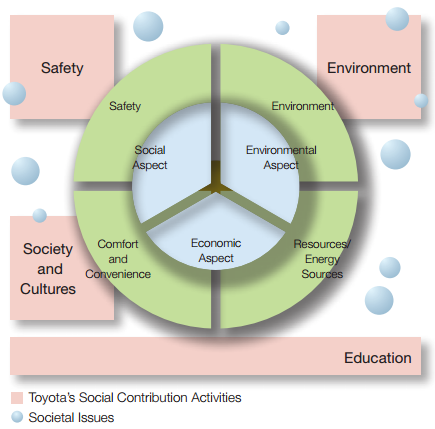
CSR programs and initiatives are launched as a part of Toyota Global Vision that was formulated in March 2011. Toyota Global Vision is represented in the form of a tree where Toyota values represent the roots of the tree, stable base of the business is the trunk of the tree. The concepts of ‘Always Better Cars’ and ‘Enriching Lives of Communities’ are positioned as fruits of the tree. In other words, Toyota Global Vision places an equal emphasis on the primary objective of profit maximization (Always Better Cars) and CSR (Enriching Lives of Communities). Overview of Toyota’s CSR activities[1] The company releases Global Responsibility Report annually and it includes the details of Toyota CSR programs and initiatives engaged by the company. Table 3 below illustrates highlights from the latest report for 2014: Categories of CSR activities Toyota Performance Labor and human rights 2.14% of all workforce are disabled people Health and safety Quality Control (QC) circles have been instituted at Toyota to increase the vitality of people and workplaces. As of March 2015, approximately 4,100 circles involving approximately 36,000 members were active in Japan, and approximately 13,000 circles involving approximately 99,000 members were active abroadToyota conducts genchi genbutsu safety inspections regularly to ensure the safety of employees and visitors to the company. Environmentb) water consumption c) recycling d) CO2 emissions Rainwater collection has been implemented by Toyota to reduce the amount of water usage in its plants Toyota engages in recycling in the following four directions: (1) utilization of eco-friendly materials; (2) making use of parts longer; (3) development of recycling technology; (4) making vehicles from the materials of end-of-life vehicles. The company aims to improve the global average fuel efficiency by 25% by FY2015, compared to FY2005 As of December 31,…
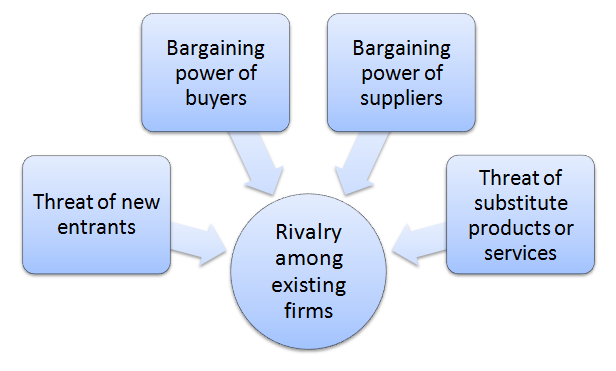
Porter’s Five Forces analytical framework developed by Michael Porter (1979)[1] represents five individual forces that shape the overall extent of competition in the industry. These forces are represented in Figure 1 below. You can learn the theory of Porter’s five forces analysis here. Figure 1 Porter’s Five Forces Threat of new entrants into automobile manufacturing industry is low. This is because of a set of industry entry barriers such as huge amount of capital requirements and access to distribution channels. Extensive economies of scale enjoyed by current automobile brands is another factor that creates a substantial barriers for new entrants. In case of Toyota in particular, due to its size and the global scope of its operations, the company immensely benefits from the economies of scale and this benefit is passed to consumers to reduce the prices of vehicles and stay competitive. Moreover, an immense role of product differentiation, expected retaliation from existing auto manufacturers and certain regulatory barriers in most markets are additional range of factors that reduce the threat of new entrances to the market. Bargaining power of suppliers in vehicle manufacturing industry is insignificant. This is because there is a great numbers of suppliers of various parts and the importance of volume for most suppliers is paramount. Supplier switching cost for an auto manufacturer varies depending on the type of supplier and the nature of the product delivered by the supplier. In case of Toyota, due to its reliance on lean manufacturing and just-in-time supply chain management, suppliers that are located closely to manufacturing units have greater bargaining power. Rivalry among existing firms is aggressive. In the global marketplace Toyota competes with General Motors, Volkswagen, Daimler, BMW Group, Honda Motor, Ford Motor Company, Nissan, Hyundai Motor, SAIC Motor and others. As it is illustrated in Figure…
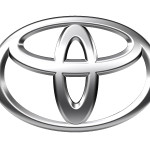
PESTEL is a strategic analytical tool and the acronym stands for political, economic, social, technological, environmental and legal factors. Toyota PESTEL analysis involves the analysis of potential impact of these factors on the bottom line and long-term growth prospects. You can learn the theory of PESTEL analysis here. Political Factors The global automobile industry is subject to a range of political factors such as political stability, the impact of home lobbying groups, major geopolitical tendencies and others. Toyota Motor Corporation in particular has experienced the direct impact of political factors in many instances. A stark example of an impact of political factor on Toyota performance relates to poor relationships between Japan and China. Specifically, “anything related to Japan — and the products it peddles – is off-the-charts out of favour. This is because the two countries are in dispute over the possession of a set of small, uninhabited, privately owned islands in the East China Sea”[1]. This situation has a potentially negative impact on the volume of Toyota revenues in China. In another instance, Toyota found itself involved in a political battle in Australia in 2014. The controversy is related to ‘royal commission’ policies introduced by the Prime Minister Tony Abbot which was criticized to target big businesses such as Toyota manufacturing in Australia. The incident has resulted in an announcement by Toyota that it will cease the manufacturing in Australia in 2017.[2] Economic Factors There is a set of economic factors such as the rate of inflation, currency exchange rate, macro-economic climate in the country and in the industry, cost of labor and tax rates that have direct or indirect implications on Toyota revenues. Particularly, currency exchange rate fluctuations is a major macro-economic factor that directly affects Toyota reported revenues. For example, company’s operating income for the fiscal…
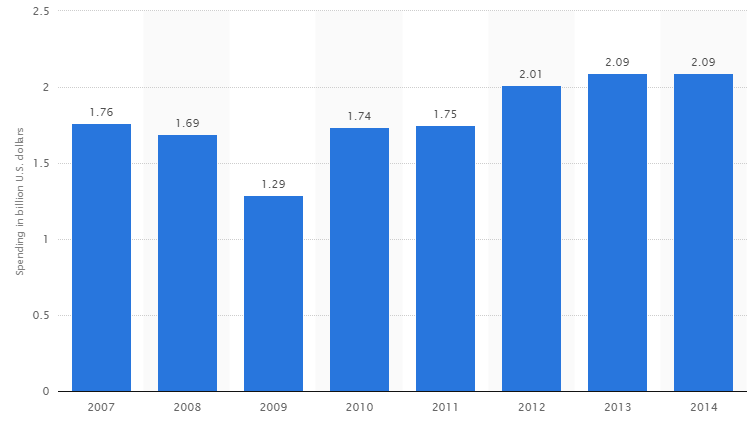
Toyota’s marketing budget has been consistently increasing after the global economic and financial crisis of 2007 – 2009 in line with overall tendency in automobile industry. Toyota marketing strategy succeeds in closely associating the brand with the best practices of Japanese ways of doing things. Specifically, Toyota marketing strategy focusses on the communication of marketing message based on the efficiency of manufacturing and use of superb vehicles. A set of marketing communication channels such as print and media advertising, sales promotion, events and experiences, public relations and direct marketing techniques are used an integrated way in order to this message to the target customer segment. Advertising Print and media advertising is one of the core elements of Toyota marketing strategy. The company uses newspapers, magazines, TV and radio ads, as well as, billboards and posters to reach its target customer segment. As it is illustrated in Figure 7 below, in the US alone the volume of advertising spending of the company reached USD 2.09 billion in 2014 and the largest proportion of this amount, USD 959 million was spent to produce and broadcast TV ads.[1] Toyota’s advertising spending in the US (in USD billions)[2] Toyota employs lifestyle-focused branding activities to promote Lexus brand. The global brand campaign slogan “Amazing in Motion” has proved to be a highly successful marketing move. As a continuation of this campaign, Toyota has partnered with rapper will.i. am to “challenge conventional notions of technology, design and music in a unique experience”[3]. The remix of the rapper’s famous hit #thatPOWER was created to feature Lexus NX highlighted by complex laser technology. Toyota viral marketing also plays an important role in increasing the level of brand awareness and promoting specific products of the company. The list of the most successful Toyota viral marketing campaigns include ‘Jungle…
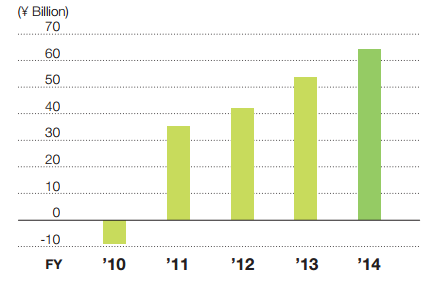
SWOT is an acronym for strengths, weaknesses, opportunities and threats related to organizations. You can learn the theory of SWOT analysis here. The following table illustrates Toyota SWOT analysis: Strengths 1. Solid financial position 2. Toyota Production System (TPS) 3. Advanced technological features and capabilities 4. Leadership position and brand value Weaknesses 1. Extensive dependence on Japan and North American markets 2. Passenger safety issues in the past and product recalls 3. Weak presence in emerging markets 4. Lack of flexibility due to large size Opportunities 1. Investments in automated driving technology 2. Business diversification 3. Focus on developing countries 4. Further concentration on electric cars Threats 1. Passenger health and safety issues 2. Fluctuations in the prices of fuel 3. Emergence of innovative competitors 4. Increase in the prices of raw materials Toyota SWOT analysis Strengths 1. Generating revenues of ¥25.6919 trillion, which is an increase of ¥3,627.7 billion, or 16.4%, compared with the prior fiscal year,[1] Toyota possesses massive financial resources. As it is illustrated in Figure below, amid intensifying competition and increasing global economic uncertainly, the net operating income of Toyota has been consistently increasing for the last five years. The current solid financial position of the company contributes to its competitive advantage via granting opportunities to engage in research and development to a greater extent. Changes in Toyota’s net operating income[2] 2. Toyota Production System (TPS) is a widely recognized system for its efficiency in elimination of waste, irregularities, and overburdening from the production process. Based on two fundamental concepts of jidoka (automation with a human touch) and Just-in-Time principle, this system has enabled Toyota to adopt a proactive approach in dealing with manufacturing issues, at the same time saving significant manufacturing costs. Additionally, Toyota has introduced and perfected manufacturing concepts of Kaizen (continuous improvement) and…
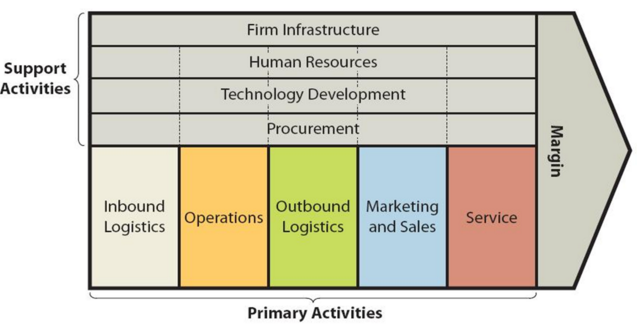
Value chain analysis is an analytical framework that assists in identifying business activities that can create value and competitive advantage to the business. Figure 1 below illustrates the essence of value chain analysis. You can learn the theory of value chain analysis here. Figure 1 Value chain analysis Primary Activities Inbound logistics Inbound logistics for Toyota comprises two separate operations. The first is the operation “that transports parts from local suppliers to the local plants; the second is a separate operation, global inbound logistics, to transport parts from Japan to the North American and European plant”.[1] Localization of production is one of the core strategies pursued by Toyota and accordingly, 75.4% and 76.3% of non-domestic sales were produced outside of Japan for the calendar years of 2012 and 2013 respectively.[2] Thanks to localization of production, Toyota is able to achieve better match of local currency revenues with local currency expenses. Moreover, Toyota has developed and perfected Just-In-Time (JIT) system of manufacturing that eliminates the need for inventory and inventory management, thus saving considerable costs. To summarize, inbound logistics is a primary activity that creates an immense value for Toyota due to the localization of production and efficiency application of JIT supply chain system. Operations In 2013 Toyota automotive operations were reorganized into the following four units: The Lexus International. The business unit is assigned the role of the global head office for Lexus brand development, sales, marketing and advertising. Toyota No.1. This unit is in charge of North America, Europe, and Japan. Toyota No.2 unit caters for emerging markets of China, Asia & the Middle East, East Asia & Oceania; Africa, Latin America & the Caribbean Unit Cellar. This unit deals with unit-related technological development, manufacturing technology development and production Toyota promotes a spirit of monozukuri i.e. conscientious…
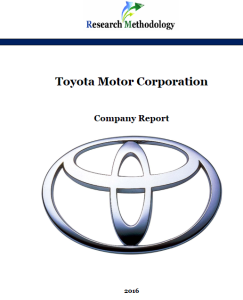
Toyota Motor Corporation is a global automobile manufacturing company that employs about 330,000 people. The company celebrated its 75th anniversary in 2012 and adherence to its mission statement “contributing to society by making ever-better cars” has taken the company to the global leadership in the industry in terms of sales. During the fiscal year of 2014, Toyota sold 9.116 million units of vehicles and generated revenues of ¥25.6919 trillion, which is an increase of ¥3,627.7 billion, or 16.4%, compared with the prior fiscal year. At the same time, it is important to clarify that revenues reported above were positively affected from a ¥900.0 billion boost due to exchange-rate fluctuations. Also, during the fiscal year of 2014, company expenses increased by ¥480.0 billion compared to the previous period. Senior management introduced massive changes to the business since 2009 immediately after the global financial and economic crisis. These include the reorganization of operations into four business units in 2013 and an extensive promotion of ‘One Toyota’ concept. The company has identified growth, efficiency and stability as three key priorities in its financial strategy. This report contains application of SWOT, PESTEL, Porter’s Five Forces and Value-Chain analytical frameworks towards the case study of Toyota Motor Corporation. The report also comprises analysis of Toyota’s marketing strategy and company’s approach towards Corporate Social Responsibility (CSR). 1. Introduction 2. Value-Chain Analysis 2.1 Primary Activities 2.2 Support Activities 3. SWOT Analysis 3.1 Strengths 3.2 Weaknesses 3.3 Opportunities 3.4 Threats 4. Marketing Strategy 4.1 Advertising 4.2 Sales Promotion 4.3 Events & Experiences 4.4 Public Relations 4.5 Direct Marketing 4.6 Personal Selling 5. PESTEL Analysis 5.1 Political Factors 5.2 Economic Factors 5.3 Social Factors 5.4 Technological Factors 5.5 Environmental Factors 5.6 Legal Factors 6. Porter’s Five Forces Analysis 7. Corporate Social Responsibility (CSR) 7.1 CSR Programs and Initiatives 7.2…

Realism research philosophy relies on the idea of independence of reality from the human mind. This philosophy is based on the assumption of a scientific approach to the development of knowledge. Realism can be divided into two groups: direct and critical. Direct realism, also known as naive realism, can be described as “what you see is what you get”[1]. In other words, direct realism portrays the world through personal human senses. Critical realism, on the other hand, argues that humans do experience the sensations and images of the real world. According to critical realism, sensations and images of the real world can be deceptive and they usually do not portray the real world.[2] An example of an optical illusion below can be used to illustrate the difference between direct and critical realism. Squares A and B appear to be different colours because of neighbouring contrasting squares, but actually they are the same colour. Direct realists would state that squares A and B have different colours, because this is what they see. Illustration of direct realism and critical realism[3] Critical realists, on the other hand, recognise that our senses and other factors may get in the way between us as researchers and researched reality. Therefore, critical realists may notice that squares A and B are actually the same colour. Direct realists accept the world as relatively unchanging. They concentrate on only one level, be it individual, group or an organization. Critical realists, on the other hand, appreciate the importance of multi-level study. Specifically, as a researcher following critical realism research philosophy you have to appreciate the influence and interrelationship between the individual, the group and the organization. Table below illustrates the ontology, epistemology, axiology and research methods associated with critical realism research philosophy Ontology Epistemology Axiology Typical methods Stratified/layered (the empirical, the actual and the real) …
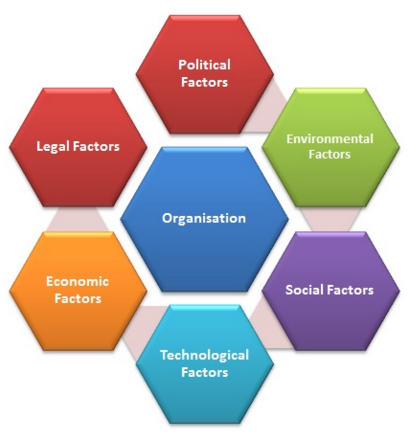
PESTEL is a strategic analytical tool used to assess external factors affecting businesses. PESTEL acronym stands for political, economic, social, technological, environmental and legal factors impacting companies. PESTEL has recently evolved from PEST analysis once intensifying forces of globalization and intensifying forces of competition in the marketplace coupled with other set of factors increased the importance and potential impact of environmental and legal factors on businesses. The majority of resources explain the application of PESTEL assuming their audience is business owners. This article adopts an alternative approach and below is the explanation of the framework for business students who have been assigned by their educational institution to conduct PESTEL analysis. Application of PESTEL as a part of your assignment can be facilitated via the following steps: Step 1: Data Collection If you have a choice, you should select a multinational corporation as a case study company to conduct PESTEL analysis due to the availability of relevant data about famous multinational enterprises. Company annual report along with official website of the company is the most comprehensive source of data needed to conduct PESTEL analysis. Additionally, you can purchase a company report on this portal. The portal offers reports about the most famous multinational enterprises and repots contain PESTEL analysis of respective companies. Online versions of the most popular business journals and magazines such as Wall Street Journal, The Economist and Inc. are also effective sources data to be used for your analysis. Step 2: Deciding which factors to discuss There is a vast range of political, economic, social, technological, environmental and legal factors that effect the company you have chosen as a case study. You do not have the space to discuss all of these factors in your paper; therefore, you will have to choose the most significant factors…
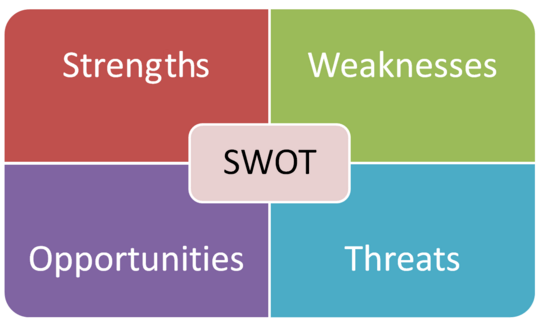
All business students are assigned to conduct SWOT analysis, usually at the earlier stages of their studies. This page focuses on the application of SWOT analysis in a business context as a part of academic assignments. This is a comprehensive SWOT resource and it contains an explanation of SWOT theory, an illustration of how to do a SWOT analysis and links to examples of SWOT analysis of major multinational brands. Moreover, SWOT analysis template further below can be used to generate SWOT tables of top multinational companies along a range of industries. SWOT Analysis: Theory SWOT is a strategic analytical tool for assessing strengths and weaknesses of a business, analyzing opportunities available to the business, as well as, threats faced by the business. SWOT analysis can be used at organizational and personal levels. As it is illustrated below, strengths and weaknesses are internal, i.e. businesses are able to influence and to manipulate with their strengths and weaknesses. Opportunities and threats, on the other hand, are external. It means businesses can only react to opportunities and threats and they do not have any means to influence opportunities and threats. Internal Strengths: attributes, characteristics and factors that give competitive advantage to the business. For example, considerable brand value of the business, cash reserves, first mover advantage and exclusive access to unique resources are major strengths that contribute to competitive advantage of the business. Weaknesses: attributes, characteristics and factors that weaken competitiveness of the business in the marketplace. A history of defective products, presence of huge debts and high employee turnover are examples for major weaknesses that a company may have. External Opportunities: favorable situations and factors that can strengthen competitive advantage of the business or provide the business with new sources of competitive advantage. The list of major opportunities for a…
